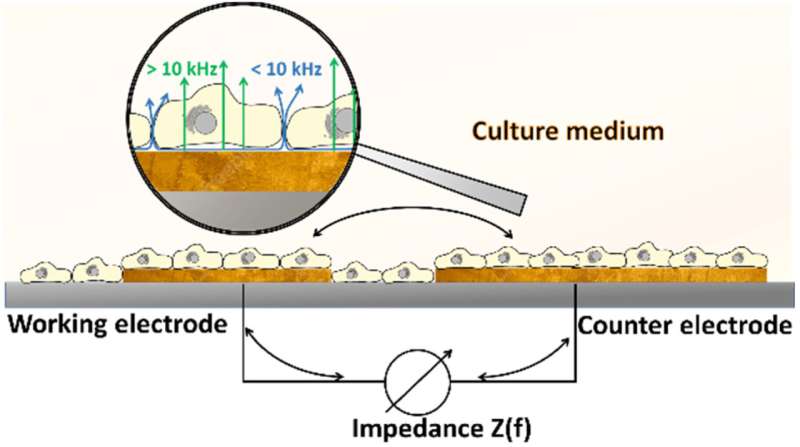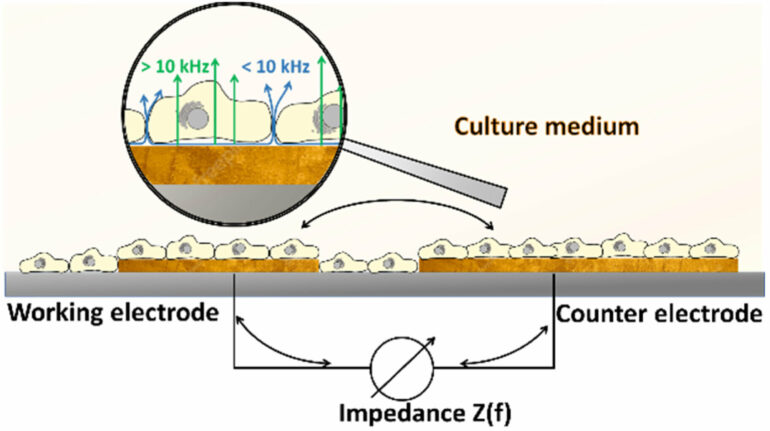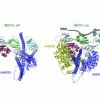The increasing global demand for plant-based foods makes the use of pesticides necessary in order to protect crops from pests and ensure crop yields. However, there is one major disadvantage: the widespread use of pesticides has led to a considerable reduction in insect populations in the past. The decline in wild bees, which make a significant contribution to pollination and are therefore essential for agricultural yields, is particularly worrying.
To solve this dilemma, scientists at the Fraunhofer Institute for Electronic Microsystems and Solid State Technologies (EMFT for short) are working on the development of new types of sensors as part of the Ökotox research project. These sensors are intended to help identify “bee-hostile” substances in the early development phases of new plant protection products.
“Our aim is for these sensors to indicate a harmful effect on insects within a few hours and at the same time allow many substances to be tested in parallel, saving time and money,” says Prof. Joachim Wegener. Wegener is head of the Fraunhofer Department “Cell-based Sensor Technology”, which is located on the campus of the University of Regensburg (UR) and is closely linked to the Institute of Analytical Chemistry, Chemo- and Biosensors at the UR.
The basic concept of the new approach is based on the use of insect cells as sensors. These cells have the metabolism typical for the respective insects and can indicate any harmful impact when exposed to bioactive substances. “The cells are transferred to laboratory dishes equipped with microelectrodes at the bottom,” explains Wegener. In these so-called multi-electrode arrays, the cells’ resistance to alternating current (impedance) is determined in real time and reports on the harmful effects on the cells.
The method could supplement conventional bioanalytical tests, which are used to determine the toxic concentration of the isolated active ingredient. However, pesticides usually contain numerous additives, which are often responsible for unintended toxic effects. With the insect cell sensors, the effect of the entire mixture is tested in a single experiment. This allows the biological effects of new formulations to be quickly identified.

Basic principle of electric cell-substrate impedance sensing (ECIS). © Applied Research (2024). DOI: 10.1002/appl.202400032
The cells are cultivated in the laboratory. They are frozen directly in the wells of the multi-electrode arrays and stored at low temperatures. Now, the cells can then be thawed as required and are ready for testing within minutes, even directly in the field, independently of a cell culture laboratory. This enables time and cost-efficient preparation of large batches of sensor cells long before testing is conducted.
So far, five different pesticides have been tested for their acute cell toxicity using this sensor technology. “The results show that some pesticides sold for household use are toxic at concentrations that are far below the recommended concentration of application,” says Stefanie Michaelis, who is in charge of the project.
In order to automate the application of the sensor-loaded electrode arrays, the research team at Fraunhofer EMFT has developed a demo device that defrosts the cells and adds the samples. “The device enables precise dosing and eliminates any cross-contamination,” explains Christian Hochreiter, who planned and designed the prototype.
The extent to which the results with insect cells reflect the influence on living insects will be the subject of further research.
In addition to detecting an acute insecticidal effect, the same sensor principle will be used to study various cell functions (phenotypes) and enable the simultaneous investigation of cells from different insect species in the future. “Our aim is to create a comprehensive impact profile of the substances that goes beyond their pure acute toxicity on a single species,” says Wegener.
The findings are published in the journal Applied Research.
More information:
Sandra Friedrich et al, Development of a label‐free, impedance‐based biosensor to identify harmful effects of pesticides on insect cells, Applied Research (2024). DOI: 10.1002/appl.202400032
Provided by
Universität Regensburg
Citation:
Novel sensors could help develop bee-friendly protection for plants (2024, October 15)



